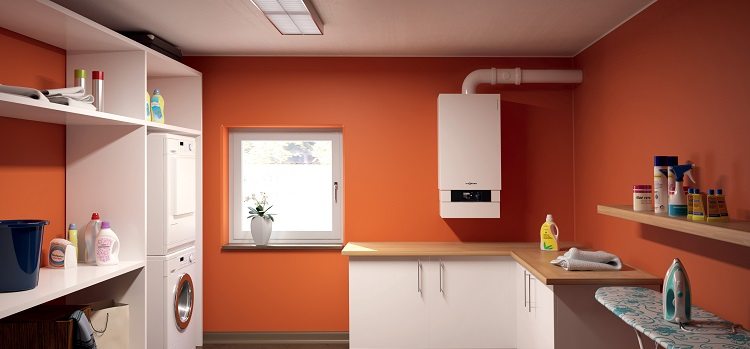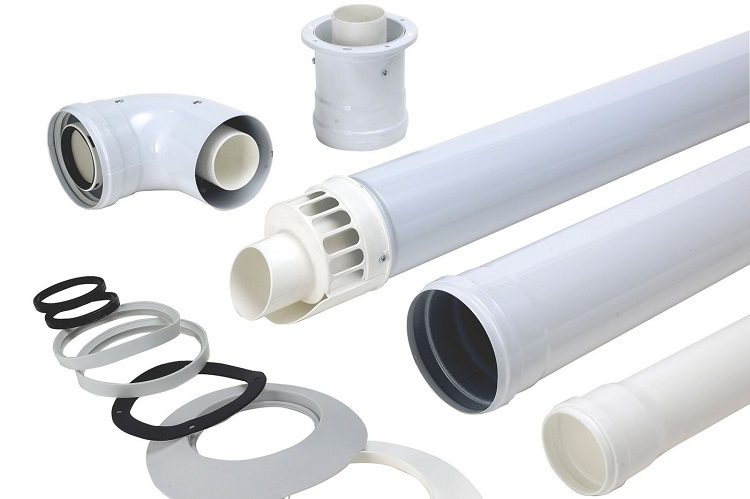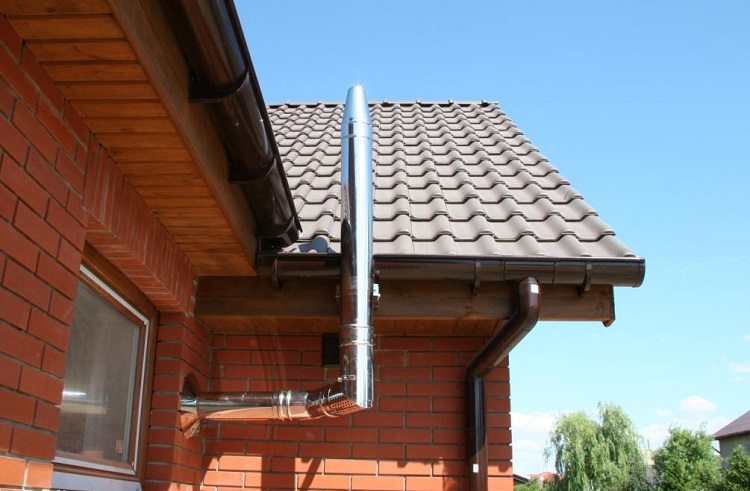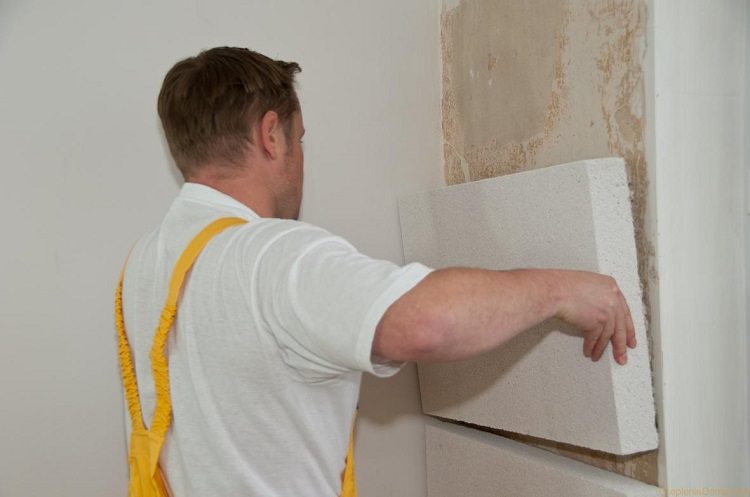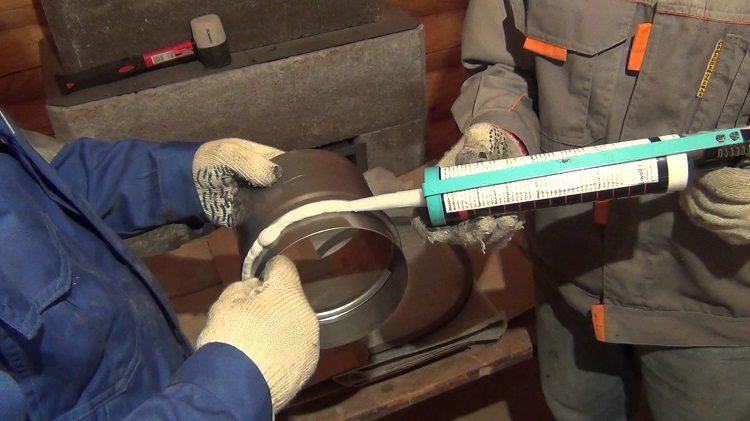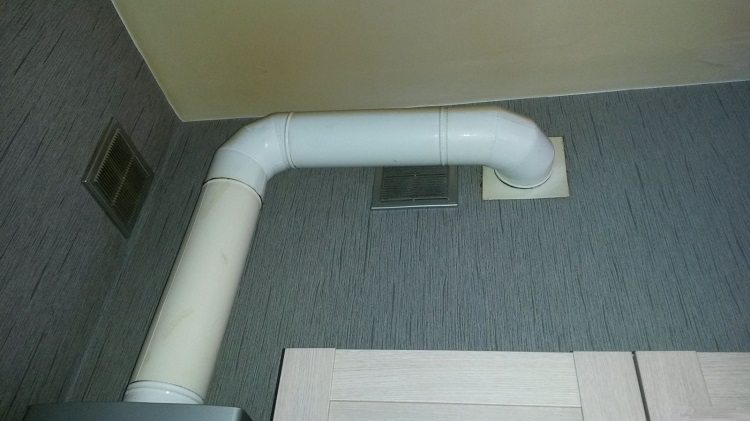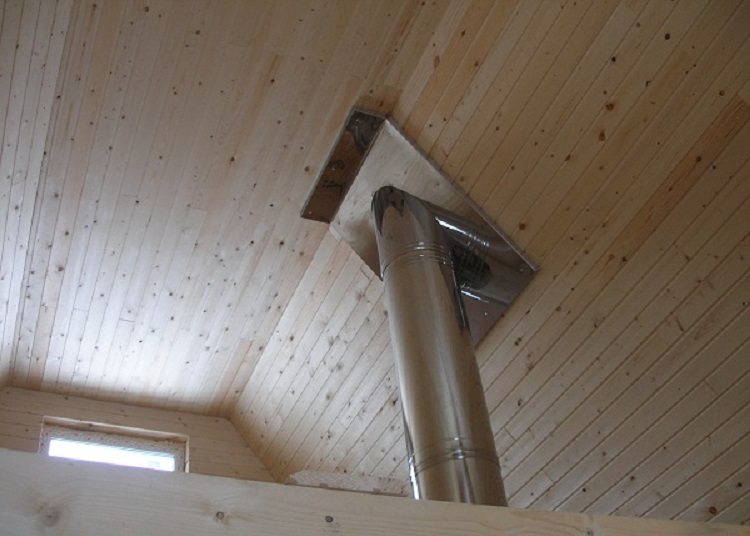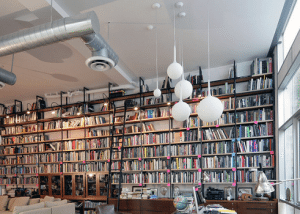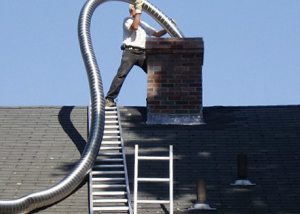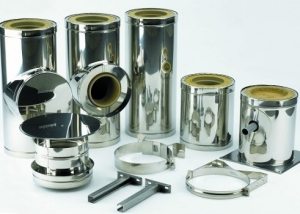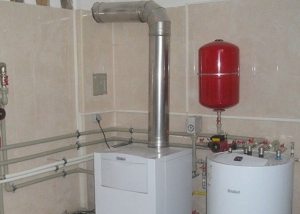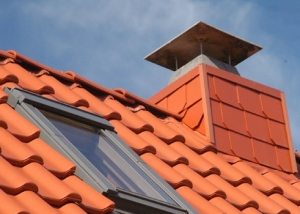Installation of gas equipment for the organization of a room heating system and hot water supply requires the removal of combustion products. For these purposes, a gas pipe and hood are installed, thanks to which efficient and safe operation of the column and boiler is ensured. The durability of the work is determined by the correctness of the calculation of sizes, the choice of materials and design, compliance with the installation technology.
Content
Types of exhaust pipes
Exhaust pipes for a geyser are made of such materials:
- aluminum;
- enamelled steel;
- stainless steel grades 316L, 316, 310S, 304.
Pipes for geysers and boilers are divided into smooth and corrugated. Steel channels are coated with heat-resistant enamel, which is not exposed to high temperatures during operation. Metal exhaust pipes have a significant drawback - the formation of condensate, the cause of which is a significant difference in temperature outside and inside the channel. This can be prevented by warming the structure.
Important! Materials for thermal insulation must be refractory, so the use of mineral wool is most acceptable.
There are pipes that have an internal insulation. They are distinguished by good strength and a long service life. For the removal of combustion products of geysers and boilers, a coaxial type chimney can be used. This design consists of two pipes: one, being inside, removes exhaust gases, the other - takes and moves the air masses to the burner.
The use of a corrugated pipe for drawing out a gas boiler avoids the use of fittings and transitions. Technical characteristics of such channels are not inferior to rigid structures.
Selection of gas ducts
The determination of the diameter of the exhaust pipe is based on:
- the amount of combustion products to be removed;
- heater power;
- temperature differences between the combustion products and the outside air;
- chimney heights.
There are many types of exhaust pipes for geysers, which differ in diameter, length, shape. The standard diameters of the produced chimneys are 110-130 mm. With a column power of up to 19 kW, a pipe with a diameter of 11 cm is used.
The height of the pipe above the roof is determined by the type of heater. It also takes into account the distance from the level of the exit clearance above the roof to the level of fastening of the chimney duct and the device. For gas boilers, the installation height of the channel should be at least two meters above the roof level.
Corrugated pipes are lightweight, easy to install and resistant to condensation. Gas heating equipment with a coaxial chimney can be installed in any room.The pipes for the column, coated with enamel, have no roughness, which reduces the resistance to air flow, reduces sound vibrations and the degree of pollution.
Standards for installing hoods for boilers and columns
Ventilation must be installed outdoors or indoors, on walls or partitions that are insulated with non-combustible material. If there is no such wall, then a mounted or root pipe is installed. Each individual heater must be equipped with separate ventilation. The only exception may be the situation when two heating boilers are installed on the same floor. In this case, no more than two devices can be connected to one chimney duct.
You can connect two geysers to one exhaust pipe, provided that the combustion products from the devices are located at a distance of more than 75 cm from each other and enter the ventilation pipe at different levels.
Important! No ventilation grilles are installed on ventilation or other smoke channels.
When installing a gas column, it is important to insulate the wall surface, which will prevent the formation of condensate. If there is no chimney in the building, then you can use the attached option. Such a device is periodically connected to a gas boiler or other devices that perform a heating function.
Features of geysers
A large number of models of gas water heaters and boilers are equipped with closed fuel combustion circuits. In this regard, it is mandatory to use coaxial flues, due to which efficient air circulation is ensured.
The construction of the hood involves:
- pipe installation only vertically;
- the use of non-combustible materials;
- no change in the cross section of the air duct;
- sealing joints with compounds resistant to high temperatures;
- use of no more than 3 elbows in the structure;
- ensuring pipe integrity.
There are columns with a forced exhaust system. For the movement of air, a fan is used, which automatically turns on when ignited. In such a system, there is no possibility of ingress of combustion products into the room.
Flue Pipe Installation
The length of the exhaust pipe for gas boilers should not be long. It is necessary to avoid its displacement and rotation. Bending the duct more than at a right angle can lead to loss of traction, and a channel offset of 90 ° reduces the system performance by at least 10%.
When installing a gas column, you must adhere to safety regulations. The device is located extremely high on the wall. The use of steel pipes during installation requires the presence of L-shaped adapters for the ventilation channel and the hood. To do this, you need to know the distance from the ventilation duct and pipe to the gas column.
Important! If the channel is suspended, then its sagging should be excluded.
In total, the length of the horizontal pipe sections should not exceed 3 m for new houses, and 6 m for previously built houses. The boiler outlet should correspond to the chimney inlet. Below their abutment, it is necessary to provide for the possibility of installing an audit for cleaning and a condensate collector.
Corrugated pipe mounts do not use adapters. Its extension and connection to the column occurs with metal tape. To reduce noise, the corrugated pipe is stretched as much as possible. When performing installation work, special sealant will be required.
An even, constant draft must be ensured inside the flue duct. This is achieved by using round tubes with a smooth inner surface.
Indoor installation of the chimney
Characteristic features of the installation of chimneys indoors are:
- preparation of the passage of the channel through the ceilings and the roof;
- the difficulty of collecting the structure and its repair;
- the possibility of harmful gases entering the living room;
- fire safety and protection of wooden surfaces.
First, markings are applied, a hole of the required diameter is cut out in the ceiling and roof. Further, the ventilation pipe is assembled starting from the boiler. To fix the pipes to the wall in increments of 3-4 m, brackets are installed. Fixation occurs with the help of clamps. The section of the channel that passes through the roof is protected by a flexible metal sheet. The junction is insulated with insulation and sealant. The insulation must be resistant to fire. The outer part of the pipe ends with a conical tip. If the building is under construction, the ventilation system of steel pipes can be installed inside the brick channels.
The distance from the gas column to the horizontal section of the pipe should be more than 50 cm. When the ceiling height is less than 2.7 m or the use of draft stabilizers, the length of the vertical section is less than 25 cm.
Features of outdoor pipe installation
An exhaust pipe for a gas boiler can be routed outside the building. With this installation, the simplicity and safety of the structure, the availability of repair work, the availability of components are ensured.
Important! Exhaust ducts of the external type along the entire length must be insulated.
First, an output is planned on the wall and a hole of the required diameter is cut out. A pipe is output through it, given that the distance from the boiler to the wall should exceed 25 cm. One end of the pipe is connected to the pipe of the heating equipment, the other is expanded by connecting the remaining parts in series. Using the swivel elbow, a vertical section of the exhaust pipe for the gas boiler is assembled.
A refractory mixture is used to seal the joints. Additional protection is provided by clamps with a coupler on the thread. Wall brackets are placed every 1-2 m. The surface of the metal is treated with an anti-corrosion mixture to prevent the effect of condensate on the material. The part of the pipe that is outside is insulated. A cone-shaped tip is installed at its end.
Installation of a gas column hood is best done using coaxial pipes. They are easier to insulate, provide a good flow of air and are safer during operation.
Correct installation of the exhaust pipe for gas boilers and columns is possible subject to all installation requirements, taking into account the characteristics of the building and the heating device.
